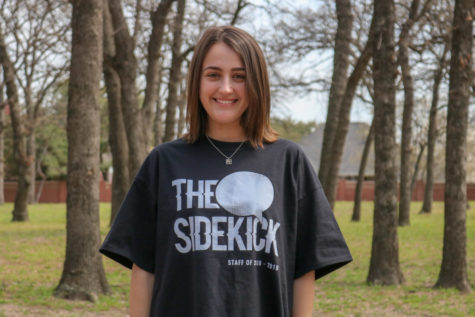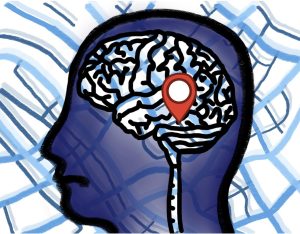A fighting message: Calvert warns students, community of prominent dangers of drug usage
Deputy Criminal Chief Assistant U.S. Attorney Rick Calvert speaks with an attendee at the annual Red Ribbon Week Committee Breakfast at the Wyndham Garden North Hotel in Dallas. The breakfast is hosted by different chambers annually to spread awareness about drug usage to local students and community leaders.
November 14, 2018
DALLAS – When presented with suicide case in March of 2014, Deputy Criminal Chief Assistant U.S. Attorney Rick Calvert found out something just didn’t add up.
Upon investigation, Calvert learned the fate of Dallas teen Rian Lashley was not a suicide at all, but a homicide resulting from a tragic heroin overdose.
Now, Calvert recalls the chilling case of Lashley from four years ago in front of students, local law enforcement and community leaders as the keynote speaker for the annual Red Ribbon Week Committee Breakfast at the Wyndham Garden North Hotel.
Calvert, among other prominent figures have appeared at history rich event in the Farmers Branch community in previous years, including the family of Kiki Camarena, an undercover DEA agent whose death in 1985 inspired Red Ribbon Week itself.
“[Farmers Branch Chamber of Commerce] have put it together and gotten each one of these students to be here and have a good breakfast, and the main thing: to be informed about the dangers of drug abuse,” Farmers Branch Church of Christ community minister Eddy Ketchersid said.
Having worked on countless and complex drug and violence cases, Calvert clarifies between drugs such as fentanyl, opioid and heroin. Heroin has taken shape in three dangerous forms: cheese, a drug identified in several Dallas ISD middle and high schools, “China White”, and Mexican black tar, where its users “chase the dragon” – an expression used for the imitation of dragon-like smoke that results from its heated form.
“Your body builds up tolerance and at some point you’re not going to get that high,” Calvert said. “Individuals who were terrified of needles will have no qualms whatsoever if their bodies are asking for it.”
With drug overdoses climbing to a record 72,000 number this year, Calvert also warns against the use of synthetic marijuana, K2 or spice, which can often be marketed as an innocuous snack or in e-cigarettes, which in reality is 85 percent as potent as marijuana.
Unlike the natural composition of marijuana, which contains the mind altering chemical tetrahydrocannabinol (THC), this drug is continuously altered, resulting in side effects known to elicit ‘zombie-like’ effects of its users.
No stranger to K2’s crippling effects, Calvert has seen first hand its effects on disoriented users roaming outside his workplace of 16 years.
“When you hear words like ‘zombie’ or ‘walking dead’, you think that might be exaggeration,” Calvert said. “There are areas right around my office in downtown Dallas where K2 was very prevalent, where individuals stand out, distribute it, and individuals smoke it on a day to day basis.”
The words of Calvert leave a mark on his audience – particularly students, who are now faced with added obstacles of peer pressure and the double edged accessibility of smartphone devices.
“Because of how fast our world is today, we become desensitized to the dangers of drugs,” Calvert. Said. “We see these drugs and packages and how ‘cool’ it is, when reality people are dying every single day.”











